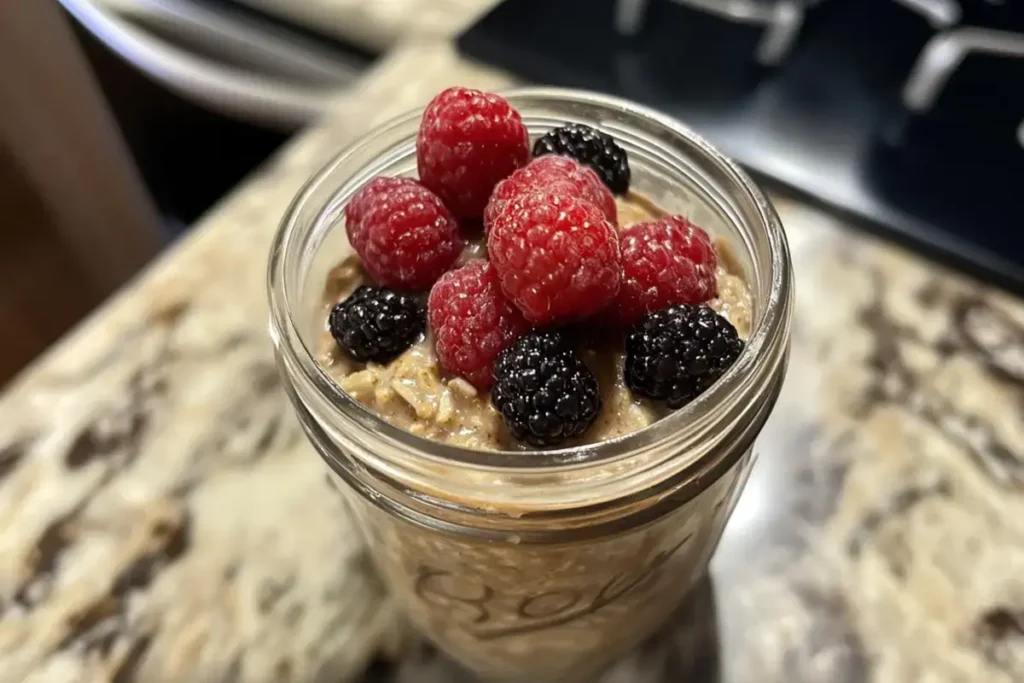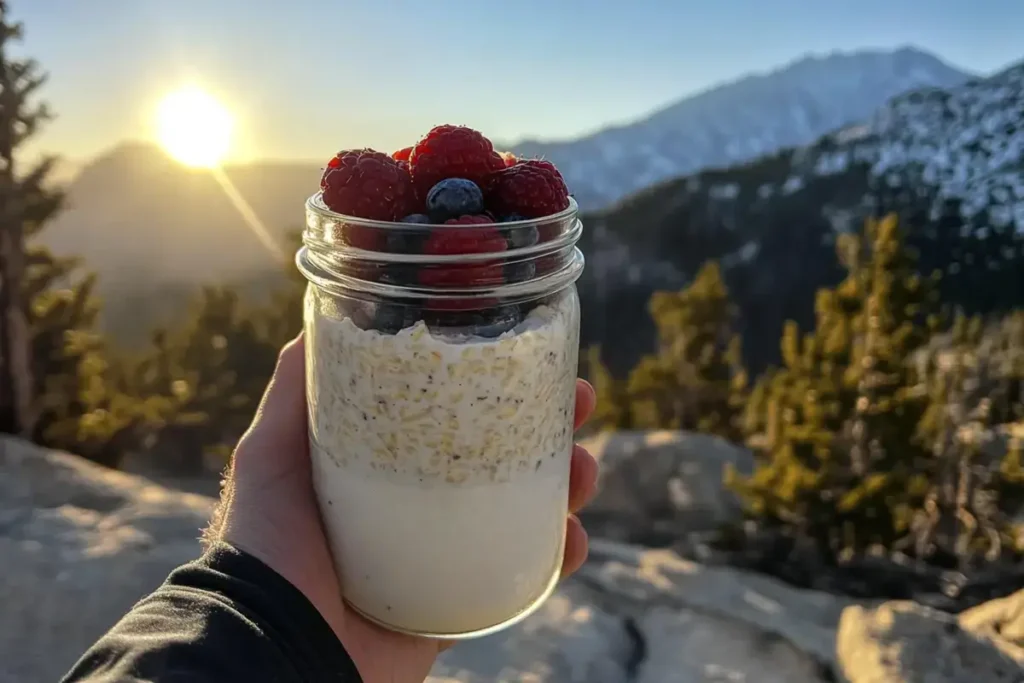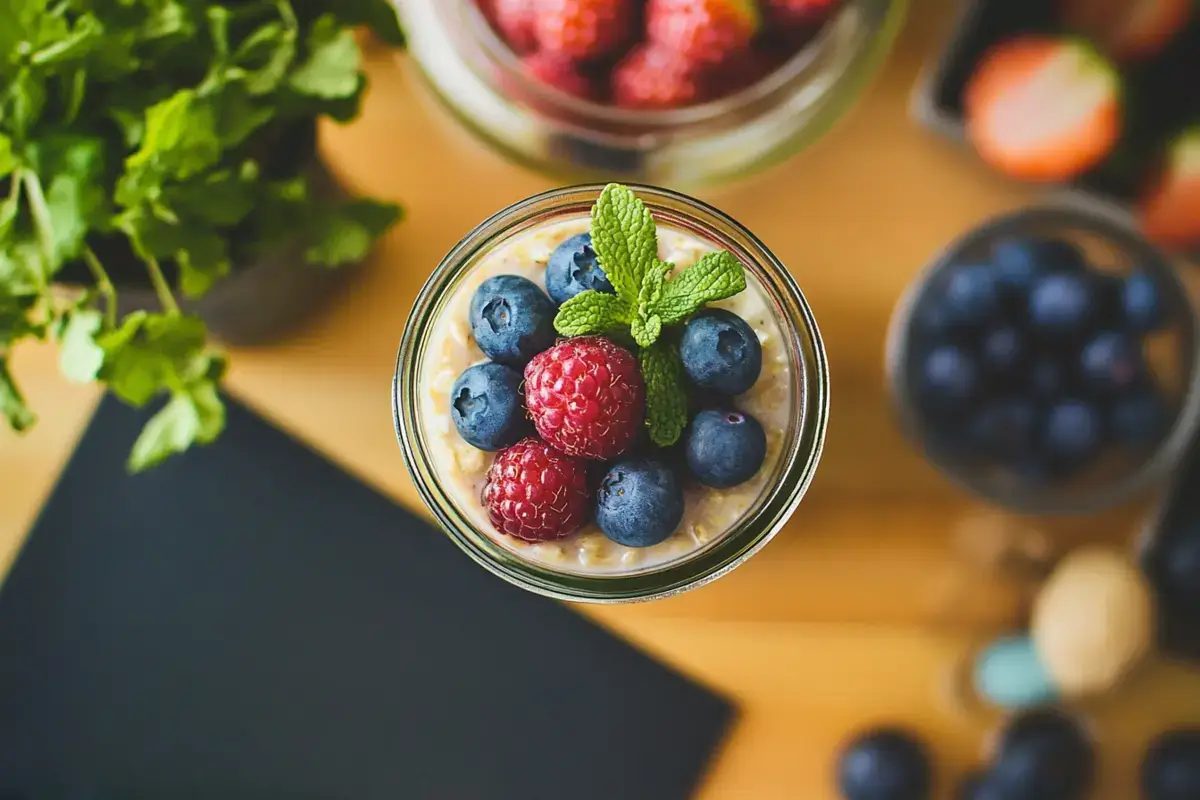Hey there, it’s Jessika from Boldy Recipes! Overnight oats have been my weekday breakfast savior for years. They’re convenient, nutritious, and endlessly customizable but I’ve seen plenty of people give up after ending up with a gluey mess or flavorless mush. The truth is, perfect overnight oats require a few simple tricks that make all the difference. Let me share exactly what I’ve learned from making these literally hundreds of times.
The Golden Ratio
The biggest mistake I see is incorrect oat-to-liquid ratio. After extensive testing, I’ve found that 1:1 ratio is perfect that’s ½ cup rolled oats to ½ cup liquid. This creates creamy, spoonable oats that aren’t soupy or too thick.
Some people prefer a looser consistency and go up to 1:1.25, while those who like it thicker stick with 1:0.75. Start with 1:1 and adjust from there based on your preference. Remember, you can always add more liquid in the morning, but you can’t take it away.

Use Old-Fashioned Rolled Oats Only
Not all oats work the same way. I exclusively use old-fashioned rolled oats for overnight oats. Steel-cut oats stay too hard and crunchy even after soaking overnight. Quick oats or instant oats turn into complete mush with an unpleasant, paste-like texture.
Rolled oats have the perfect structure they soften beautifully while maintaining enough texture to be satisfying. This isn’t negotiable if you want good results.
Liquid Matters More Than You Think
Plain water works, but it creates bland overnight oats. I use milk or milk alternatives for creamier texture and better flavor. My go-to is regular dairy milk, but almond milk, oat milk, and coconut milk all work beautifully.
Greek yogurt is my secret weapon I replace about one-third of the liquid with yogurt (so ⅓ cup milk plus 2-3 tablespoons yogurt). This creates incredibly creamy oats with added protein and a pleasant tang that balances sweetness perfectly.
A Pinch of Salt Changes Everything
This sounds minor, but adding a tiny pinch of salt (about ⅛ teaspoon) enhances all the other flavors. Even in sweet overnight oats, salt makes the difference between flat-tasting and delicious. I never skip this step.
Sweeten Smart
I add sweetener at night, not in the morning. Maple syrup, honey, or agave (about 1 tablespoon) allows the oats to absorb sweetness evenly overnight. If you wait until morning, you get pockets of sweetness that aren’t well-distributed.
For natural sweetness without added sugar, I mash half a banana into the mixture. It adds creaminess, natural sugars, and flavor all at once.

Timing Actually Matters
The name says “overnight,” but I’ve found 8-12 hours is the sweet spot. Less than 6 hours and the oats are too chewy. More than 24 hours and they can become slimy and lose their texture.
I prep mine before bed (around 10 PM) and eat them between 6-8 AM. Perfect every time.
Layer for Better Texture
Here’s a trick I learned through trial and error: if adding chia seeds, mix them with the liquid first, let sit for 5 minutes, then add oats. Chia seeds need direct liquid contact to gel properly. When you dump everything together, they can clump.
For mix-ins like nuts or fresh fruit, I add crunchy elements in the morning to preserve their texture. Berries, sliced banana, granola, and nuts go on top right before eating.
Container Choice
I use mason jars or containers with tight-fitting lids. They’re portable, prevent the oats from absorbing refrigerator odors, and make the oats easy to shake and mix. Plus, you can eat directly from the jar less cleanup.
Temperature Preference
Most people eat overnight oats cold, straight from the fridge, and that’s how I prefer them in warmer months. But in winter, I microwave them for 60-90 seconds for warm, comforting oats. They’re just as delicious heated.
My Base Formula
Here’s what goes into my jar every time:
- ½ cup rolled oats
- ⅓ cup milk
- 2-3 tablespoons Greek yogurt
- 1 tablespoon maple syrup
- ½ teaspoon vanilla extract
- Pinch of salt
- ½ teaspoon chia seeds (optional)
From this base, I add different flavors cinnamon and apple, cocoa powder and banana, peanut butter and berries. The possibilities are endless once you master the foundation.

FAQs
Q: Can I make overnight oats for the whole week?
A: Yes! I make up to 5 jars at once. They stay good for 4-5 days in the refrigerator without texture issues.
Q: Do overnight oats need to be refrigerated?
A: Yes, always refrigerate them. Room temperature encourages bacterial growth, especially with dairy or yogurt added.
Q: Can I use steel-cut oats instead?
A: Steel-cut oats don’t soften enough overnight. Use rolled oats for proper texture and consistency.
Q: Are overnight oats healthy?
A: Very! They’re high in fiber, can be packed with protein (especially with yogurt), and give you sustained energy. Watch added sugars.

